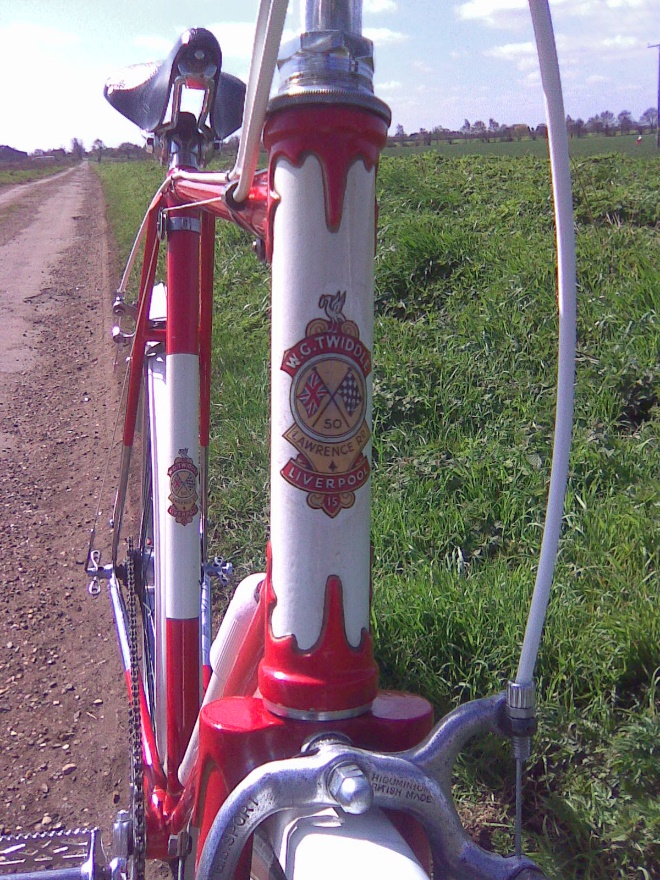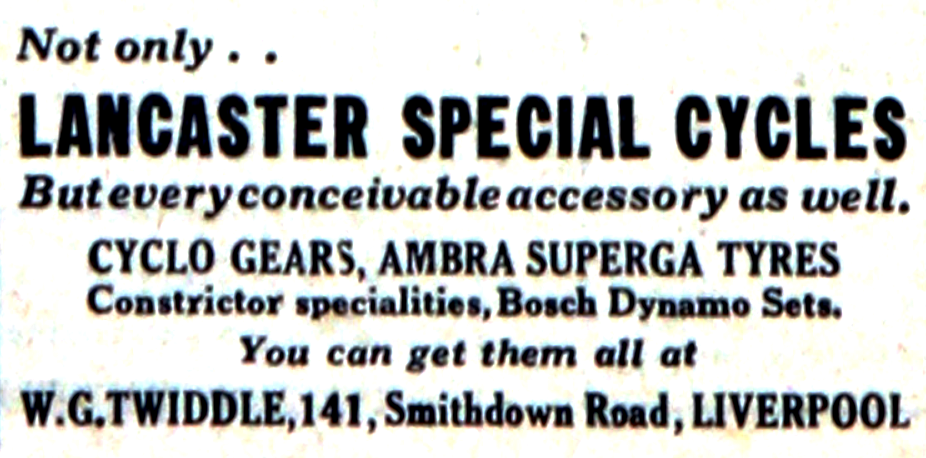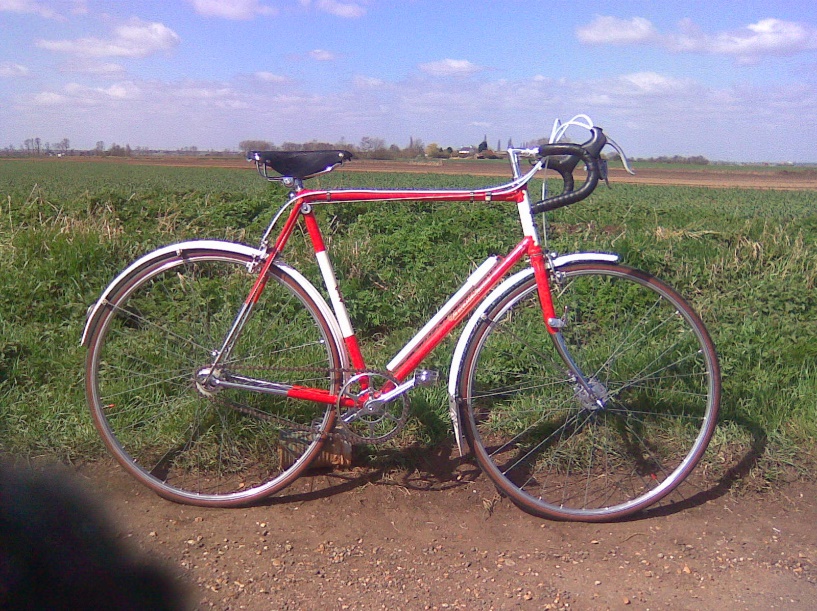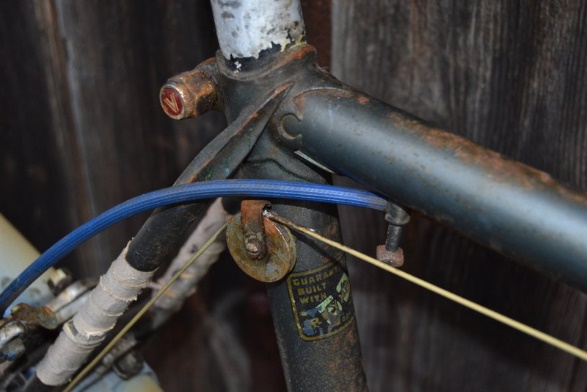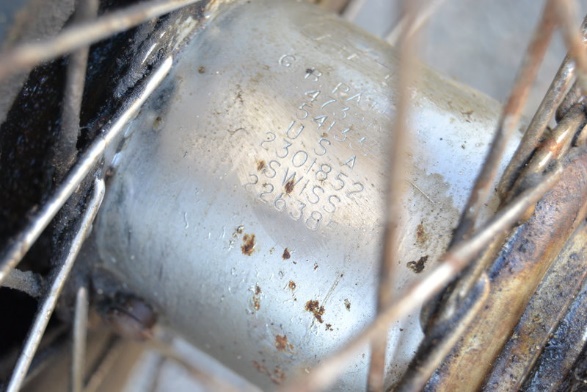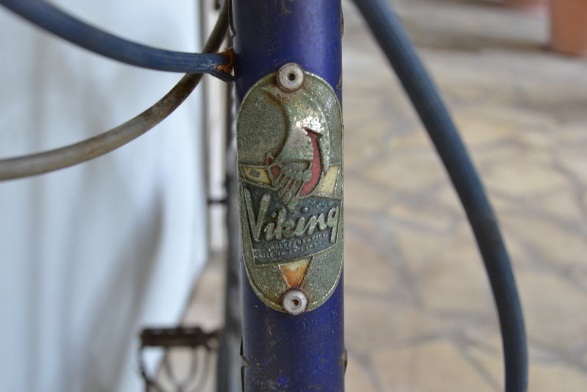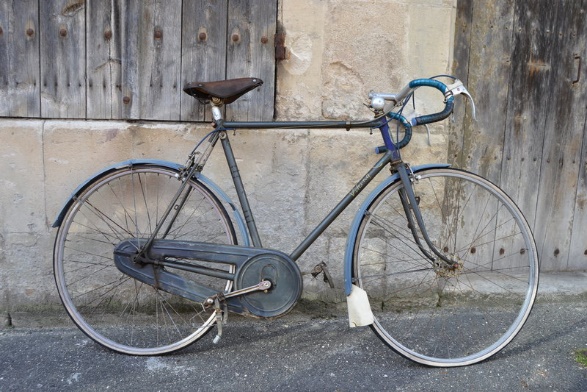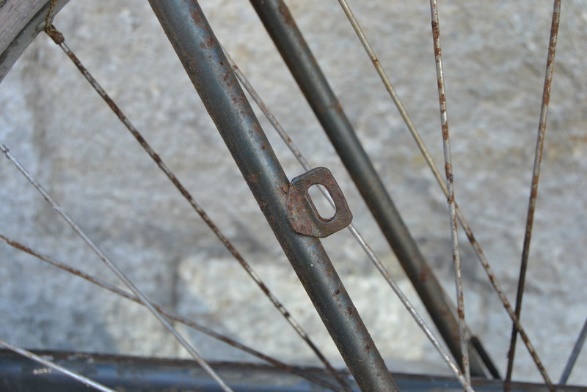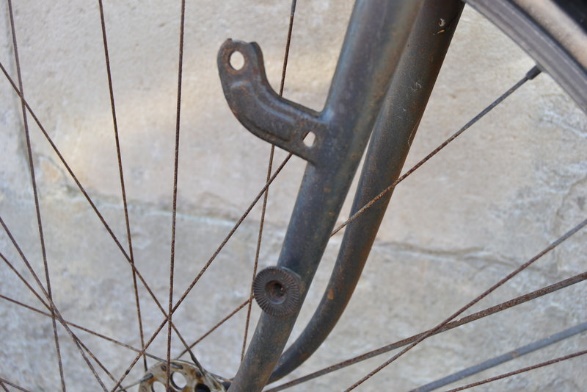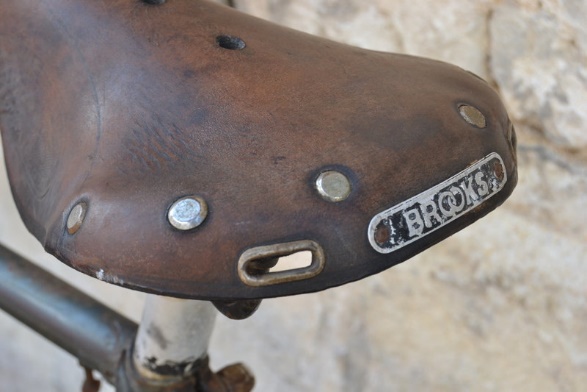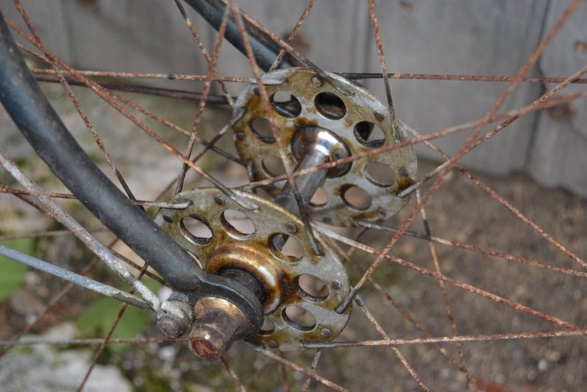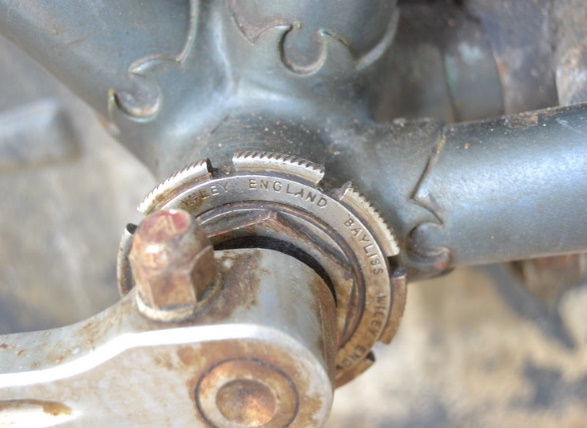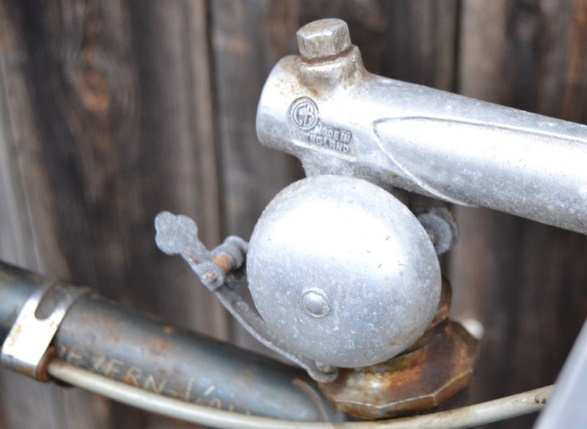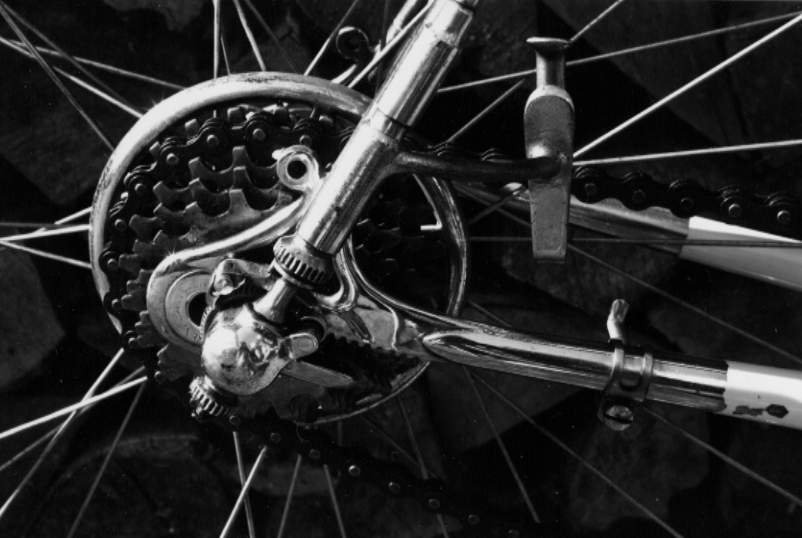Vol. 2, Issue 83 - September / October 2019
Posted: Monday 16th September 2019
William George Twiddle was born in the Toxteth Park district of Liverpool in 1904. On leaving school he became apprenticed to a local motor engineering company. William (Bill) was an enthusiastic cyclist, and in due course joined the Walton Cycling & Athletic Club. He soon proved to be a first-class rider and in 1927 won the club’s 25 and 30-mile championships, he also broke the Liverpool to Lancaster and back record. The following year, on 26th June, he joined the Liverpool Century Road Club. His club records during his years with the LCRC were numerous, and he held several club administrative positions finally becoming Vice-President from 1950 until his death in January 1959. In recognition of his achievements, the W.G. Twiddle Memorial Trophy was purchased with subscriptions from club members, and was first awarded in 1961.
In the mid-1930’s Bill opened his first cycle shop and workshop at 141 Smithdown Road, Liverpool 7, building frames and assembling “bespoke” bicycles to customer’s orders.
I’m assuming that Bill was personally responsible for producing these frames as information on his business seems difficult to obtain. Any help on this point from readers will be greatly appreciated.
The cycles built at this time, and indeed up to 1959, all appear to be badged and transferred as “Lancaster Specials” – see the following advertisement from a pre-war “Cycling “:
Another Liverpool company, C & G Finishes of Back Faulkner Street did all the enamelling and finishing off for the W.G. Twiddle frames. They kept a good stock of transfers and evidently still had some of these in the 1960’s (see comments later in this article).
W.G. Twiddle’s activities during the Second World War are not known, presumably at his age and with his engineering capabilities Bill would have become a serving member of the armed forces. But in 1945 new premises at 50 Laurence Road Liverpool 15 were acquired. – it appears that more space was needed than that available at Smithdown Road. (The original premises still exist, not destroyed in the Liverpool blitz as I originally suspected). Cycle frame building and assembly re-commenced at the new workshop. Following contemporary trends, and looking at the very few surviving machines from this period, frames were built with steep angles and a short wheelbase as shown in the photo below of my 1947/48 “Lancaster Special”.
At this time frame tubes were obtained from either Accles & Pollock (“Kromo”) or Reynolds (“531”) and lugs were probably from the Brampton Fittings company. So far, the writer has only been advised of six other surviving machines, one of these being a tricycle which has a rear axle assembly manufactured by J.E. Hawkins, who also had works in Liverpool. Frame numbers all seem to be located either on the seat lug r/h side, on the fork steerer tube (as on my machine) or a combination of both positions, and from the few frame numbers so far notified to me seem to be usually a five figure number made up by a combination of serial number and two figure year date – for example, 17347 (the machine shown above)
How many frames were produced in a typical year? It seems to average about 27 (working from the serial numbers and year dates I have found so far). However, there are a couple of machines that don’t conform to this, having been stamped with a four figure number, which appear to be, year first, and then a serial number, e.g – 4610
Bill was in business from 1945 right up to the time of his sudden death on 4th January 1959 at the early age of 54. The notice of his passing, and of his cremation later in January appeared in the “Cycling“ magazine. His business was subsequently taken over by Bert Swindell and it is thought that, apart from finishing off Bill’s existing orders, there were instances of stock frames from other builders being bought in and finished as “Lancaster Specials“ – What I can report is that, following my request in the “News and Views” magazine, number 356, a Club member wrote to me with a description and photo of a very nice bicycle he had bought, finished as a “Lancaster Special” but subsequently found to be a Holdsworth product, dressed up as a “Twiddle”! – So, was this one from the 1960’s era too?
As I said previously, as yet I have only been advised of six other cycles, one tricycle, and three framesets which are still around. I therefore would be very pleased to hear of more “survivors” and especially from any readers who know more about, or have memories of, Bill Twiddle.
Holdsworth I believe purchased the following from Claud Butler (Bicycles) Limited rights – to the head-badge, down-tube Claud Butler script signature transfers and the set tube Clapham works transfer which they then registered these trade marks in their name in their own right.
After the liquidation of Claud Butler (Bicycles) Limited he then reopened in May 1959 as Claud Butler Ltd operating from 34 St. Johns Street S.E.20 Clapham Common but this again was only a short lived venture, being wound up on September 29th1960.
Brief history of Claud Butler St. Johns street shop which I visited at least three times and spoke to Claud himself. He was a Raleigh and Falcon dealer right from the start and specialised in renovations on his earlier Claud’s that his firm produced having an abundant supply of CB transfers and head-badges.
He maintained fiercely that he still had a right to the name and all his new frames used Block Letter transfers and the head transfer Famous All Over The world or “The New Claud”, “Claud Butler”, London England and laurel wreath and Olympic ring transfer.
CYCLINGS
January 1960 Claud Butler Himself at Clapham Junction and listed as a Falcon Dealer on Falcon dealers advert
March 16th 1960 Claud advertising himself at it again but there also appears an advert for Claud Butler advertising the Corden Bleu, Challenge and Olympic with the Claud Butler signature as a registered trade mark and clearly stating C.B Cycles London S.E.20 the only address (Holdsworth).
March 30th 1960 Claud Butler Frames built by himself only obtainable from Pride & Clarke. Also Claud listed as authorised Raleigh dealer as Claud Butler Ltd St. Johns Street.
Over the Counter article page 25. These frames will be produced personally by Mr. Butler who has re-established himself in London S.W.11. It also states at the bottom of this article that the original business started by Claud Butler is now being carried on by C.B Cycles, London S.E.20.
May 4th 1960 Last advert for Pride & Clarke selling Claud Butler frames.
May 11th 1960 Claud Butler Himself starts advertising Paris Roubaix, XVII Olympiad and Regency Continental.
June 8th 1960 Last appearance of Claud Butler himself advert.
June 15th C.B. Cycles Ltd resume advertising the 5 Speed Courier. Claud Butler Himself has vanished from advertising.
July 27th 1960 C.B Cycles Ltd advert for Courier that the Head Badge CB London England is their Registered Trade Mark.
Finally earliest reference to Claud Butler
Earliest known reference I have ever found is in the history of “The Southern Wheeler’s by Tom Killick & Ken Tamon Year Page 13 1925 reference to the club minutes when the Chairman proposed an advertising rate of five shillings per page in the Club Handbook, those accepted Claud Butler they also wrote to M. G. Selbach and F.H. Grubb but they declined the offer.
You might be interested in this 27 minute film of the 1953 Tour of Britain, plenty of footage of bikes and riders. Feel free to include the link in Cambridge Lightweight News.
https://player.bfi.org.uk/free/film/watch-wheel-in-britain-1953-online
By the way, there are many other cycling films in the “Archive Films” section of the BFI (British Film Industry) website.
Bikes for Sale
C1957 Allin Stan Butler Special Model, 23” seat tube, good condition for age. Fancy lugs, original paint, chrome, Campagnolo gears and cables including 1st Gen Record front mech. Early Vainqueur brakes with DARE brake hoods. Phillippe stem, Maes bars, FB cranks with TA rings, hollow axle. Lyotard 45 CA pedals, large flange pre 63 record hubs on Weinmann rims and new tyres, early 60s B15 saddle. £700
C1950 22” (?unconfirmed) Innanzi Tutto refurbished with original transfers (Burgundy flam/ light blue panels). 26” wheels – Sturmey 3-speed AM with wingnuts. Nicklin cranks with K pattern chainring, Lyotard pedals. GB spearpoint stem, Maes bars, GB Courier brakes. Oval badge B17 saddle, R5 seat pin, Light blue Bluemels guards. Detachable saddle bag rack made by Ron Cooper. Light blue Chossy saddle bag. £450
C1946/47 Special CNC specification on ‘Readers Bikes’ £700
A curiosity for repatriation – an unusual 1959 Viking Severn Valley
In France, we don’t have anything quite so learned as Classic Lightweights but we do have the “Forum Tonton Vélo” for those who, generally, wish to restore bicycles dating from before 1980. I don’t count myself as an expert, but when a British bike occasionally turns up on the forum I try to help other members with translating specifications, catalogues etc.
An unusual machine popped up on the forum. The background, as we could ascertain it, was that a forum member was interviewed by the press, in the Charente region. Following the story, the member was contacted and offered a bicycle. The story goes that it belonged to a keen cycling French doctor near Bordeaux and had been used for two Paris-Brest-Paris events. We cannot confirm this latter information. The machine subsequently passed to another forum member.
This is the extent of the information that I can put together on this strange, but logical design for a bomb-proof long distance randonneur. The frame must date from after 1955, due to the transfers on the seat tube, but before 1960, when the numbering for Viking frames changed. There wasn’t a Severn Valley model in the Viking catalogue of 1956 but it reappeared in 1957, with Nervex Pro lugs.The frame number V 706 clearly indicates that it is a Severn Valley.
The 1959 catalogue shows the Severn Valley as the top-of-the-range model. At that time, there were five options, all for derailleur gears and including an integrated gear-hanger on the right, rear drop-out. Therefore, this machine with Cyclo drop-outs and no gear-hanger was made-to-measure.
This is further reinforced by the fact that the frame was built for a Sturmey Archer hub gear. The small braze-on jockey wheel for the SA cable confirms this. Also, the five options available in the catalogue all had a brazed-on fixing for a derailleur lever on the down-tube. This machine has no such fixing. The rear hub gear is dated 1959 and, therefore, would seem to be the original piece.
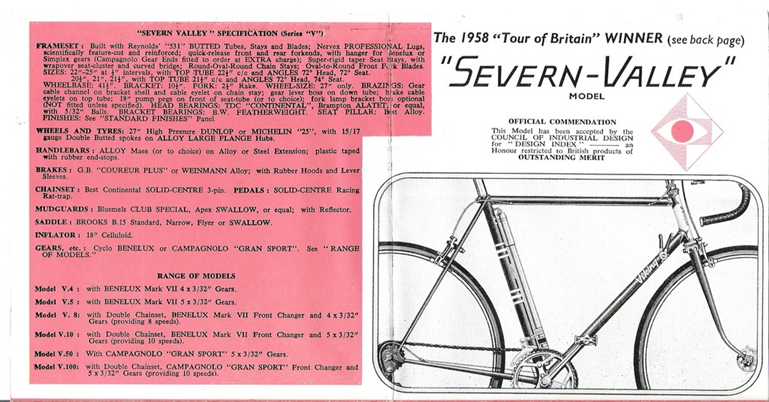
A front lamp boss was an option in the catalogue but on this machine we can see that the purchaser intended the bike for continental use by specifying that the boss be placed on the left side. The front dynamo and rear dynamo fixings were not catalogue options. Given the existence of original paint on these pieces, I can only conclude that these too were original fittings requested by the purchaser.
I have never seen a full chain-case on a top-end racing machine, but again, the existence of original paint and fittings indicates that this is the original specification.
The colour is described as gunmetal grey in the catalogue, together with the “poly blue” contrast stripes. The detail concerning the seat-tube bands is exactly as shown in the catalogue. The paintwork and components have been carefully cleaned but not overly so.
The expected components for this machine would be:
Headset – TDC Continental. Bottom bracket – Bayliss Wiley “Featherweight”. Hubs – alloy, large flange. Bars – racing Maes. Brakes – GB Coureur Plus. Saddle – Brooks B15. Mudguards – Bluemels Club Special (the original light blue were in poor shape and were replaced with red, only for the purposes of the photo above of the cleaned machine).
My forum friend specialises in machines before 1910 and so the Viking is a bit of an anomaly in his collection. We think that this bike is unique in France and probably just unique. There isn’t much of a following for Vikings in France and on that basis, we wonder if someone back in the UK would like it. If you would be interested, please contact me at mjflynn7@gmail.com
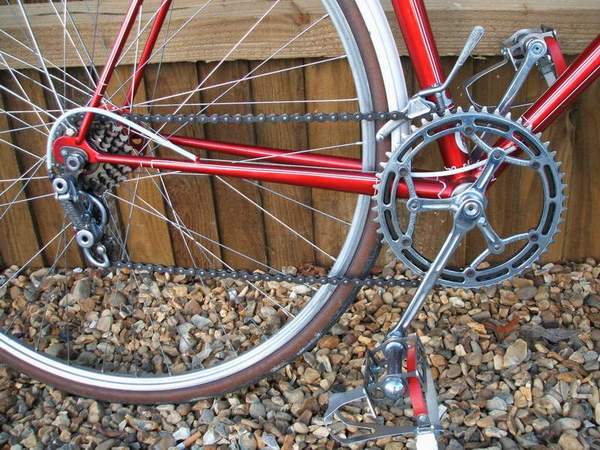
Here is a very nicely restored 1954 Bates Volante equipped with some very interesting components. The gear changing is by courtesy of Campagnolo’s very rare early 1952 Gran Sport – the one with the drilled pulley wheels and extended cage which was only produced for a very short time. The front changer is another rare piece, a Campag Sport with fore and aft moving lever. Chainset is a 47/50 Stronglight cottered steel.
Early-production Gran Sport
This is a first mass-production (1953) Gran Sport with cable adjuster which can be seen top-left next to the ‘throw’ adjuster. This adjuster was dropped on later models.
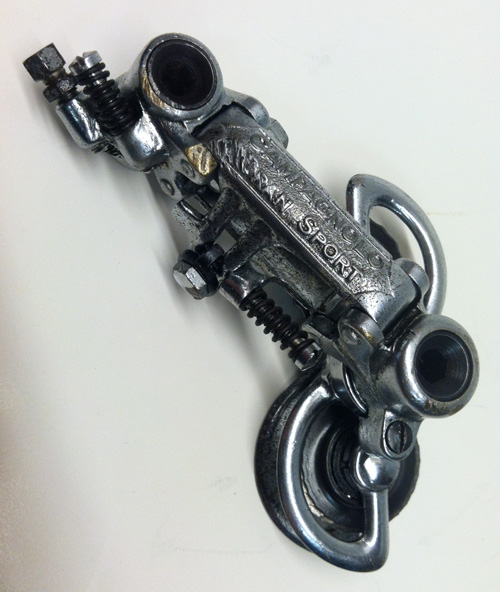
Campagnolo Paris Roubaix gear
Here is the rear end of a Bianchi Paris-Roubaix complete with the much coveted Campagnolo Paris-Roubaix gear mechanism. For those who are not familiar with the gear it works as follows: the top of rear drop-outs are notched and these coincide with notches on the axle. There is no chain tensioner at all – as the gear is changed the wheels walks backwards and forwards to keep the chain relatively tight. How on earth does this work I hear you say. As you can see, a rod goes up alongside the chainstay and has a lever at the top, not unlike a QR lever – which is appropriate as it happens. The gear is changed as follows:– First make sure that there is no one riding in front, or even worse, watching from behind. Reach down to move the lever on its first part of travel which will then release the tension holding the wheel in the frame.
The next part of the lever travel moves the gear selection fork which can be seen astride the top of the chain. Now pedal backwards (because the striker is on the top of the upper chain) whilst moving the lever to select a higher or lower gear. If you select a lower gear then the wheel will have to ‘walk’ forward along the notches to accommodate the larger sprocket. When this is done move the lever back to its original position to lock the wheel. Breathe a sigh of relief and start pedalling in earnest again. For a higher gear, that is to a smaller sprocket, the wheel will have to ‘walk’ backwards to take up the slack.
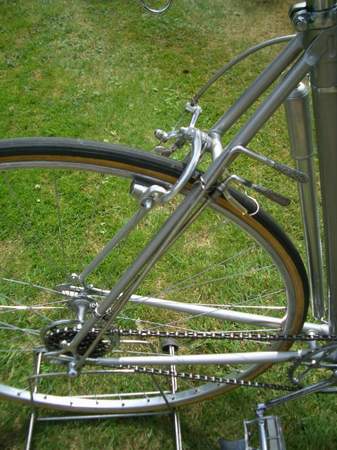
You may have already guessed that I am an armchair expert as I have never ridden one of these gears but I suppose that goes for 99.9% of us.
The Paris-Roubaix gear was introduced in 1950. It superseded the even more complicated Cambio Corsa which had been available since 1946. This gear worked on exactly the same principle as the P-R but had separate levers to release the hub and execute the change.
I think I am right in saying that a third version of the gear was produced where the striker operated on the lower chain and so obviated the need to pedal backwards whilst changing. There is a cam on the gear which can be adjusted to pre-set the chain tension after the change is made. This was very important in an era when chain tension was considered a big factor in a bike set-up.
Posted: Monday 16th September 2019
This article appears in the following categories.
Upcoming Events
Whether you are looking for a gentle social meet up, or a 100-mile ride browse the community’s upcoming events and plan your next weekend outing.

